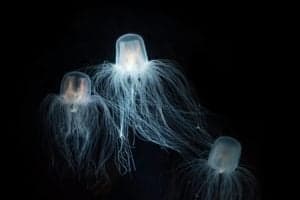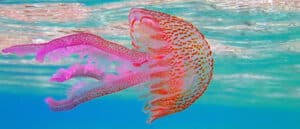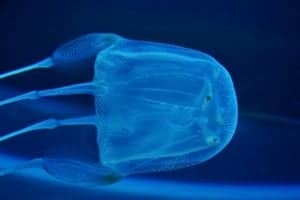Turritopsis dohrnii also goes by the more commonly known name, the immortal jellyfish. Mature specimens look bell-shaped and measure about 0.18 inches wide and around as tall. Unlike most animals, adult immortal jellyfish can revert to an immature polyp stage, reversing the aging cycle. This has led them to become the focus of intense study regarding aging, genetics, and medicine. Here are 10 incredible immortal jellyfish facts demonstrating what makes these creatures so amazing.
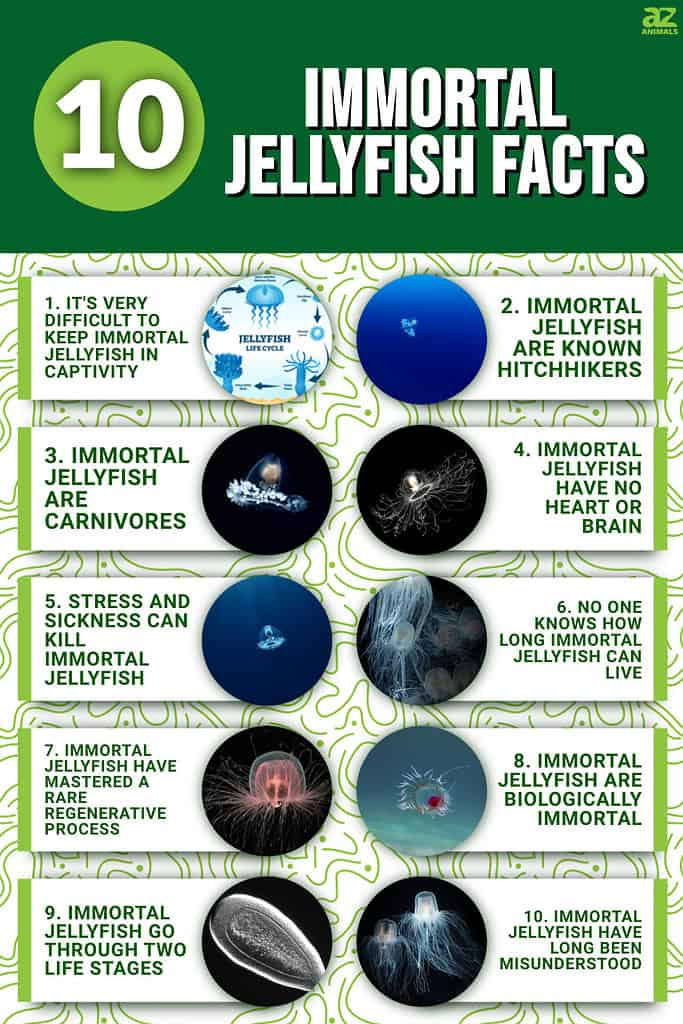
10. Immortal Jellyfish Have Long Been Misunderstood
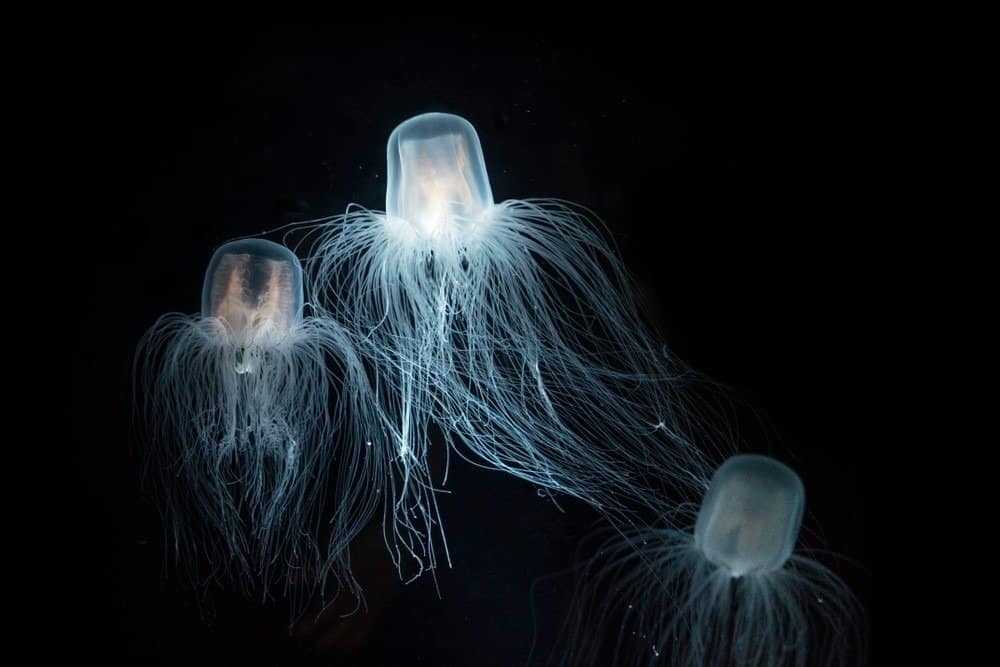
Scientists first discovered T.
dohrniispecimens in 1883 in regions of the Mediterranean Sea.
©Fon Duangkamon/Shutterstock.com
For our first entry on our list of immortal jellyfish facts, we must go back to the very beginning. Scientists first discovered T. dohrnii specimens in 1883 in regions of the Mediterranean Sea. Due to their small size, it took several decades before scientists discovered specimens in other parts of the world.
Similarly, it wasn’t until nearly 100 years later that scientists uncovered the most revelatory aspect of immortal jellyfish. In the late 1980s, students Christian Sommer and Giorgio Bavestrello collected and monitored several T. dohrnii polyps until they formed into medusae. They believed that the jellyfish would sexually mature and then spawn larvae. Still, to their surprise, they witnessed several samples revert back into a polyp stage without fertilization or going through a larval stage. Their discovery kickstarted interest in the creatures and led to the nickname “immortal jellyfish.”
9. Immortal Jellyfish Go Through Two Life Stages

Immortal jellyfish begin their lives as tiny, free-swimming larvae known as planulae, similar to the one shown.
©Jccardenas13; Elizabeth Lee, CC BY-SA 4.0 – License
Like other hydrozoans, immortal jellyfish begin life as tiny larvae or planulae. In the larval stage, immortal jellyfish freely swim around until eventually settling down on the sea floor. Next, a series of polyps begin to form from a single planula. As a result, each polyp is technically a genetically identical clone. These polyps generate a branching form, a feature rarely occurring in other jellyfish.
The larval or polyp stage then gives way to the second stage, the medusa stage. This stage is when the polyps bud off and continue as free-swimming creatures and is also what most people visualize when they think of jellyfish. At this point, the jellyfish are not yet sexually mature and will continue to grow until they reach sexual maturity and then spawn and fertilize eggs, thereby repeating the cycle.
8. Immortal Jellyfish Are Biologically Immortal

These specimens effectively reset their biological clock, thereby avoiding the process of spawning offspring normally required to produce young.
©Bachware, CC BY-SA 4.0 – License
Most animals are subject to biological aging, known as senescence, or the gradual deterioration of functional characteristics or the whole of a living organism. In most species, advanced age leads to an increased likelihood of death and decreased fertility. However, T. dohrnii, along with a few other jellyfish species, bucks this trend and has evolved a trait that makes it biologically immortal.
Biological immortality means that an organism can stabilize or decrease senescence, thereby pausing or even reversing the aging process. In immortal jellyfish, this occurs when jellyfish in the medusa stage revert back to the larval polyp stage. These specimens effectively reset their biological clock, thereby avoiding the process of spawning offspring normally required to produce young.
7. Immortal Jellyfish Have Mastered A Rare Regenerative Process
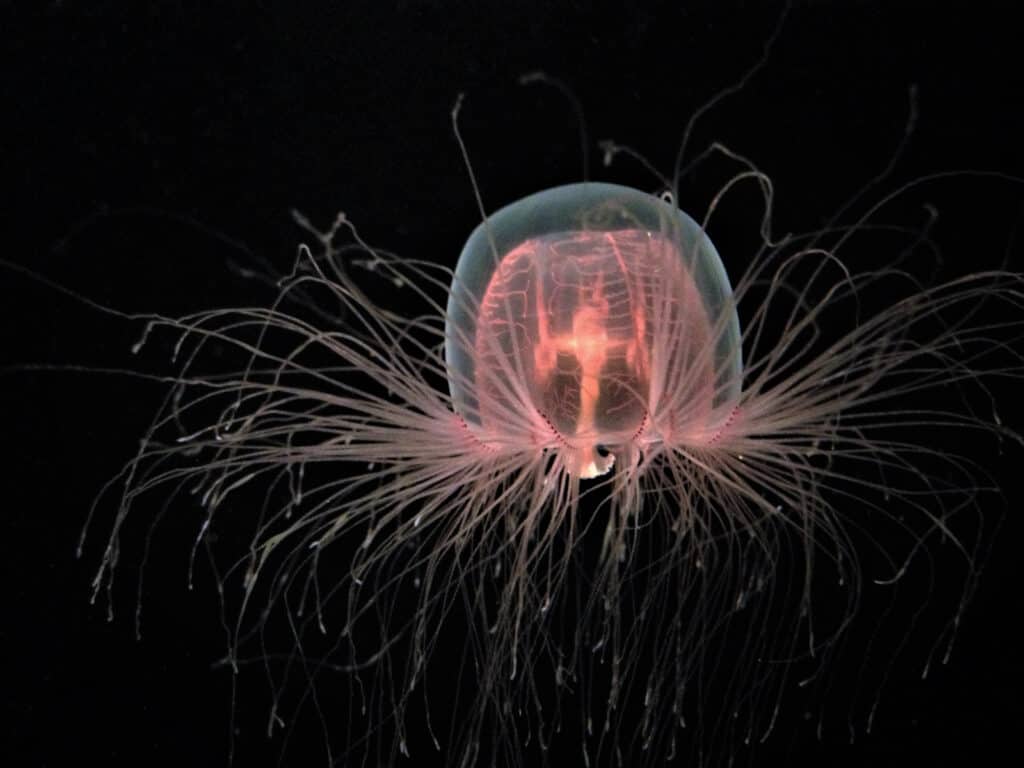
Immortal jellyfish go through a process known as transdifferentiation.
©Rebecca Schreiner/Shutterstock.com
Next, we have the most technical entry on our list of immortal jellyfish facts, so bear with us. The process that allows immortal jellyfish to revert to the polyp stage goes by transdifferentiation. Also known as lineage reprogramming, the process involves one mature cell transforming into another mature cell in a different state. A transforming medusa reverses the normal biotic cycle, with mature features reverting back into immature features and finally into a polyp stage.
Transdifferentiation is particularly interesting to scientists studying disease modeling, drug discovery, gene therapy, and regenerative medicine. According to some, possible consequences of studies in transdifferentiation and immortal jellyfish could lead to information that helps us extend human lifespans, cure diseases, and reverse aging.
6. No One Knows How Long Immortal Jellyfish Can Live
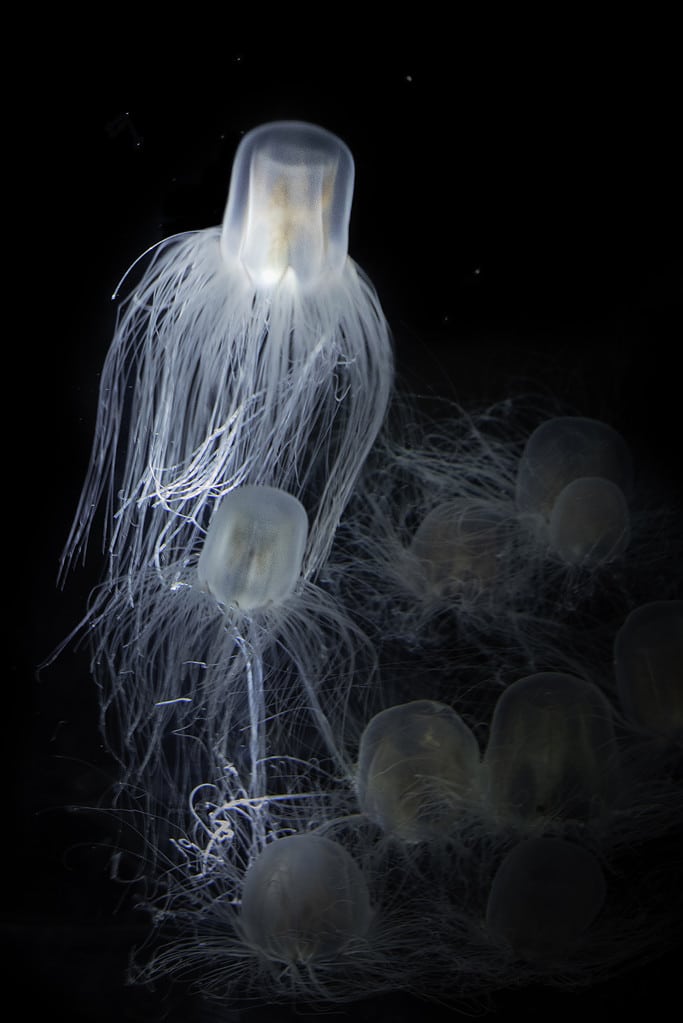
It’s difficult to study the lifecycle of immortal jellyfish both in the wild and in captivity which is why no one knows just how long they can live.
©Duangkamon Panyapatiphan/ via Getty Images
Due to transdifferentiation, immortal jellyfish can transfer between the mature and immature life stages multiple times. Theoretically, there is no set limit on the number of times a single specimen can go through this process. As a result, it’s possible that an immortal jellyfish could live forever.
That said, it’s difficult to study the lifecycle of immortal jellyfish both in the wild and in captivity. To date, no one knows just how long an immortal jellyfish can live. It’s unlikely that a jellyfish could repeatedly experience the exact situations required to revert to a polyp stage. Additionally, there may be a cap on the number of transmissions or other unknown factors that inhibit future reversals.
5. Stress and Sickness Can Kill Immortal Jellyfish

While technically immortal, immortal jellyfish can still die.
©scubadesign/Shutterstock.com
When immortal jellyfish reach the medusa stage, they reach a point when they can go one of two ways. Either they continue to sexually mature and eventually spawn offspring or revert to the polyp stage. Researchers who have observed the reversal note several reasons for this shift. Namely, stress, a change in temperature or water salinity, starvation, or injury can all shock a medusa into reverting into a polyp.
While stress and sickness can cause a medusa to transform back into a polyp and reverse the biotic cycle, the same is not true for a polyp. Stress, sickness, or injury can all be fatal to a polyp, cutting an immortal jellyfish’s life short. To truly be immortal, T. dohrnii specimens must experience these shocks as adult medusae rather than as infant larvae.
4. Immortal Jellyfish Have No Heart or Brain
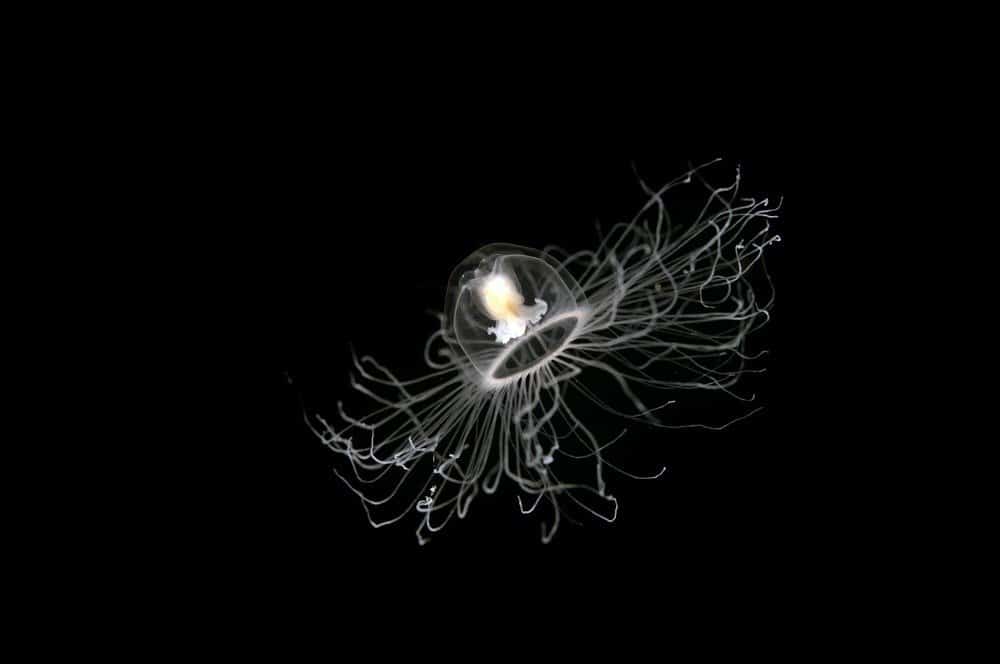
Like other jellyfish, immortal jellyfish do not have a brain.
©zaferkizilkaya/Shutterstock.com
Our next entry on our list of immortal jellyfish facts is a bit of a head-scratcher. Like other jellyfish, immortal jellyfish do not have a brain. Moreover, they also lack a heart, bones, or blood and are made up mostly of water. The body of a medusa is bell-shaped and contains between 8 and 90 tentacles depending on the specimen’s age.
To get by without a hair or brain, immortal jellyfish rely on a dense net of nerve cells in the epidermis of the cap. They also possess a large, bright red stomach to digest food.
3. Immortal Jellyfish Are Carnivores
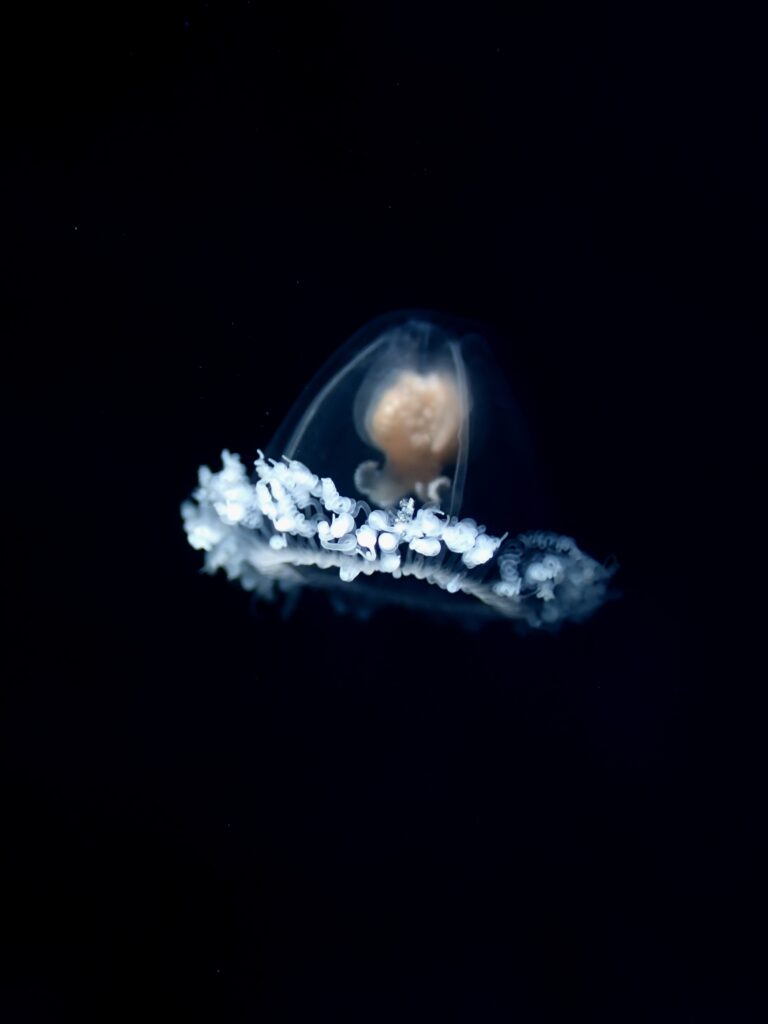
Immortal jellyfish are carnivorous.
©Karajohn/Shutterstock.com
Like other jellyfish, immortal jellyfish are carnivores that primarily feed on microscopic organisms such as zooplankton. They also prey on other life forms such as plankton, fish eggs, and small mollusks. Additionally, mature medusae will also prey on other jellyfish. They hunt using their tentacles to snag and sting their prey before navigating food into the mouth.
On the other hand, immortal jellyfish are also mostly preyed on by other, larger jellyfish. They also fall prey to sea anemones, sharks, sea turtles, penguins, and tuna.
2. Immortal Jellyfish Are Known Hitchhikers
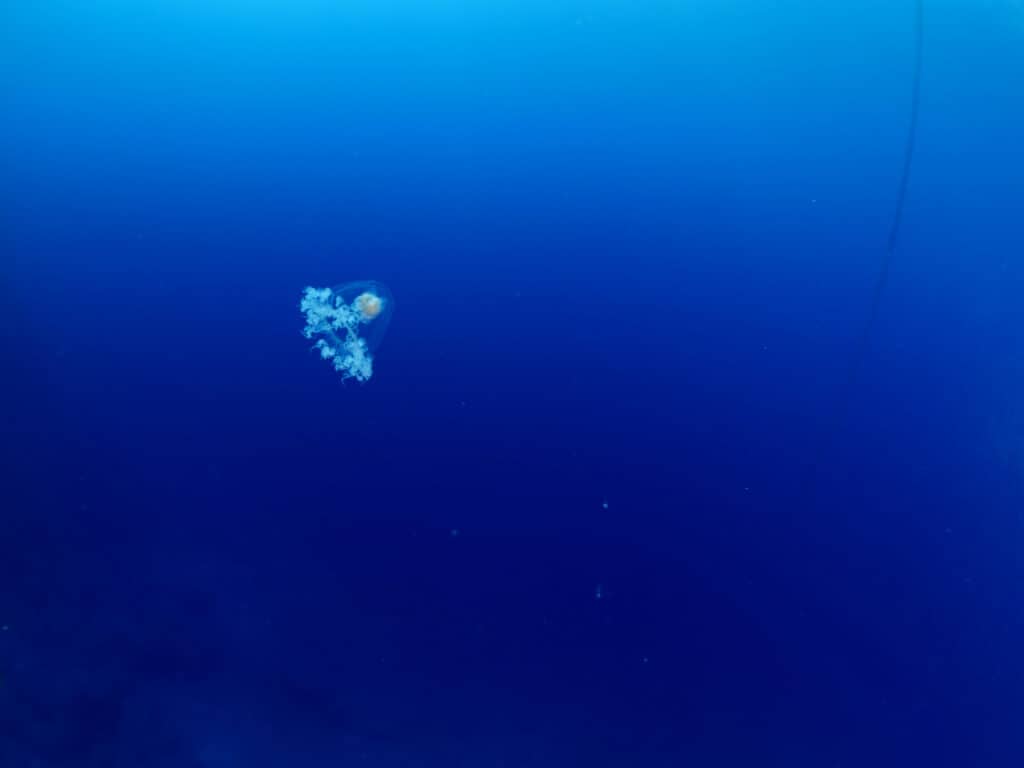
Immortal jellyfish have proven difficult to study.
©scubadesign/Shutterstock.com
For years, scientists had a hard time tracking the distribution of immortal jellyfish populations, and this is largely due to their small size and relatively innocuous ecological footprint. Immortal jellyfish prefer to live in temperate and tropical waters, although they are sometimes found in colder regions. While originally discovered in the Mediterranean, they are thought to have originated somewhere in the Pacific Ocean.
Today, they range throughout the world, with populations found in the waters around Panama, Spain, and Japan. According to records, immortal jellyfish will hitch rides on cargo ships that use seawater for ballast. When the ships discharge their ballast, this causes the jellyfish to be introduced into new environments.
1. It’s Very Difficult to Keep Immortal Jellyfish in Captivity
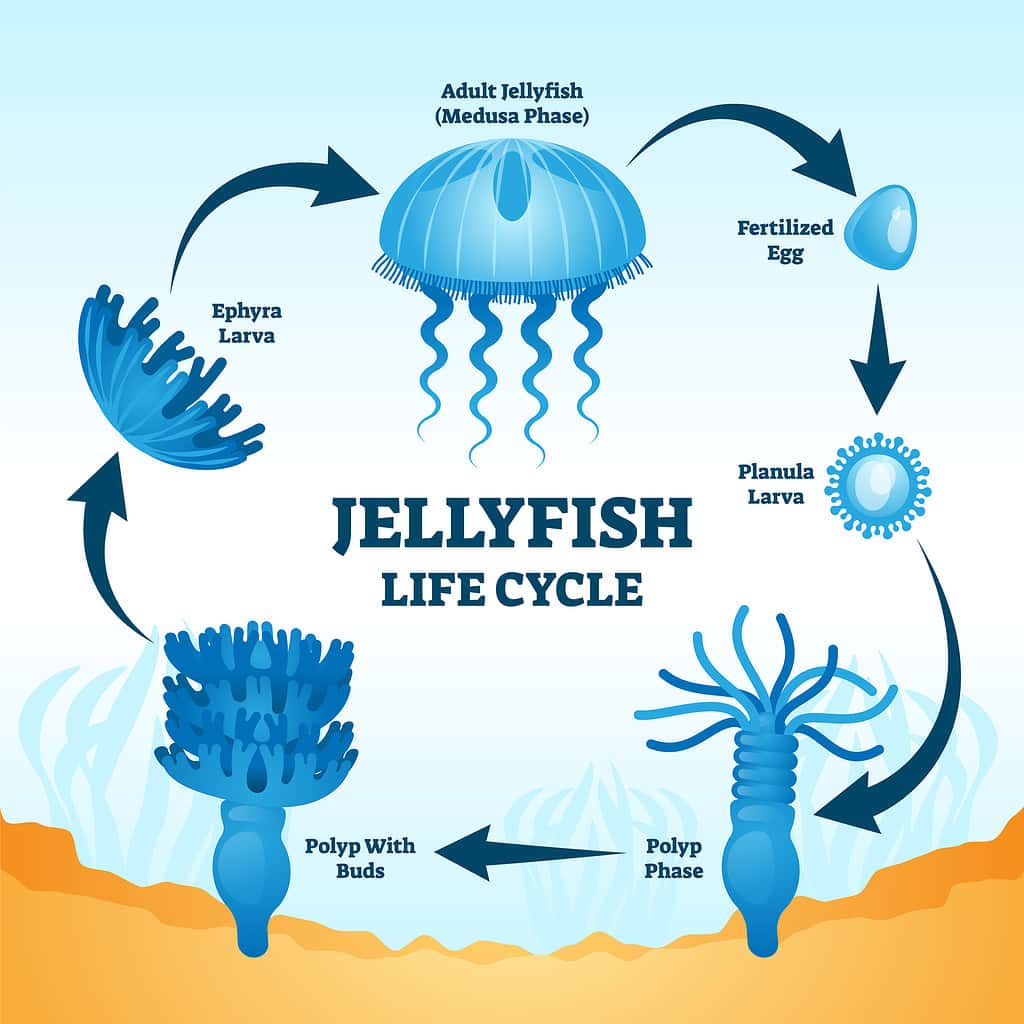
Most attempts to study the life cycle of immortal jellyfish have failed, as scientists aren’t able to keep specimens alive long enough.
©VectorMine/ via Getty Images
Lastly, on our list of immortal jellyfish facts, we’ll explore one reason why immortal jellyfish are so difficult to analyze. To date, raising immortal jellyfish in captivity has proven challenging. Most attempts to study the life cycle of immortal jellyfish have failed, as scientists aren’t able to keep specimens alive long enough. In particular, feeding has posed problems, as the jellyfish plankton must be frequently supervised to ensure they digest food properly.
So far, only one scientist – Shin Kubota from Kyoto University – has been able to sustain a colony of immortal jellyfish for more than a short period. During a two-year observation, he watched the same jellyfish revert back into a polyp stage 10 times. Kubota has since become a leading figure in the study of immortal jellyfish. He even created a series of songs about them which he enjoys singing at karaoke parlors.
The photo featured at the top of this post is © Rebecca Schreiner/Shutterstock.com
Thank you for reading! Have some feedback for us? Contact the AZ Animals editorial team.



